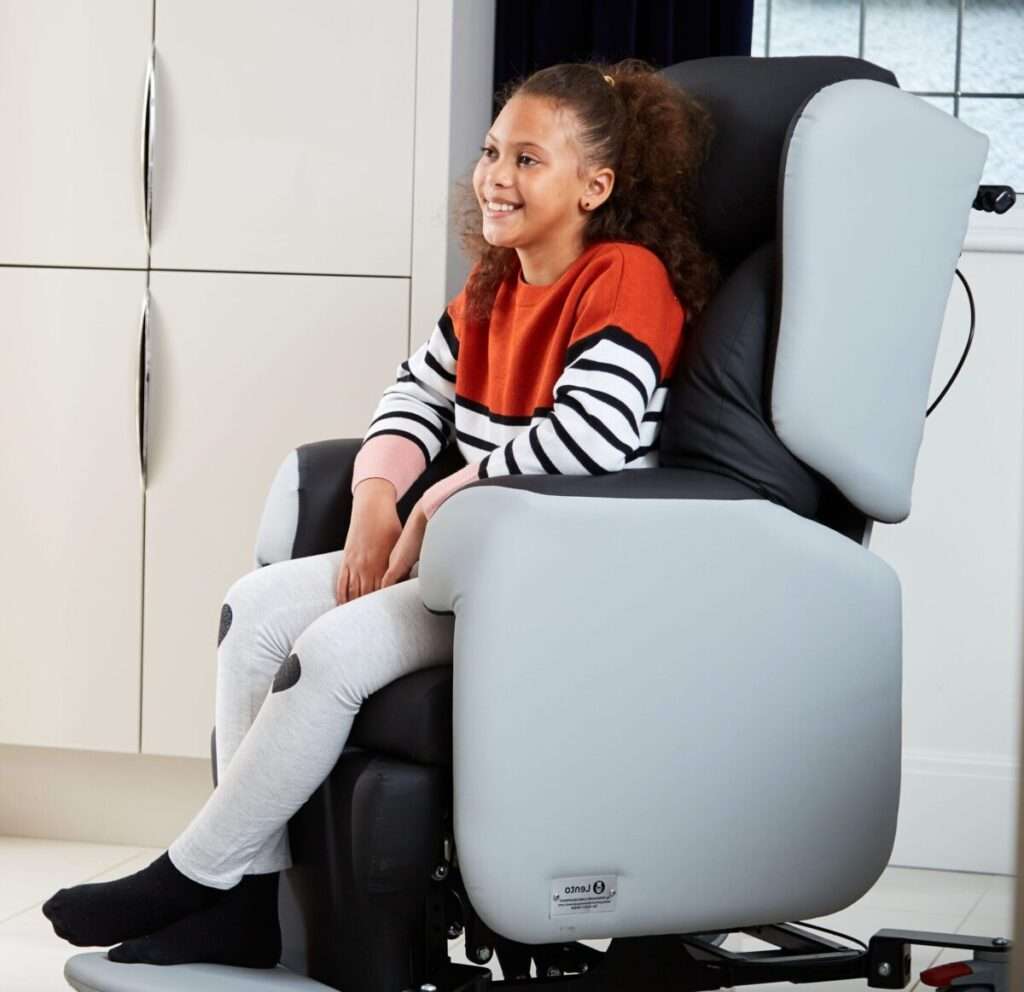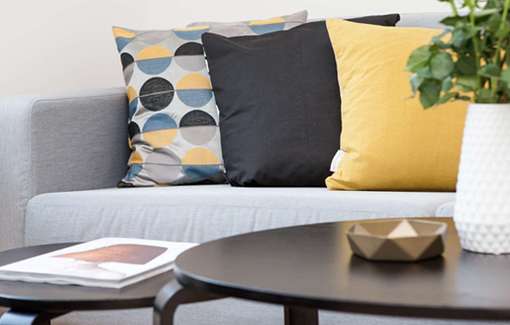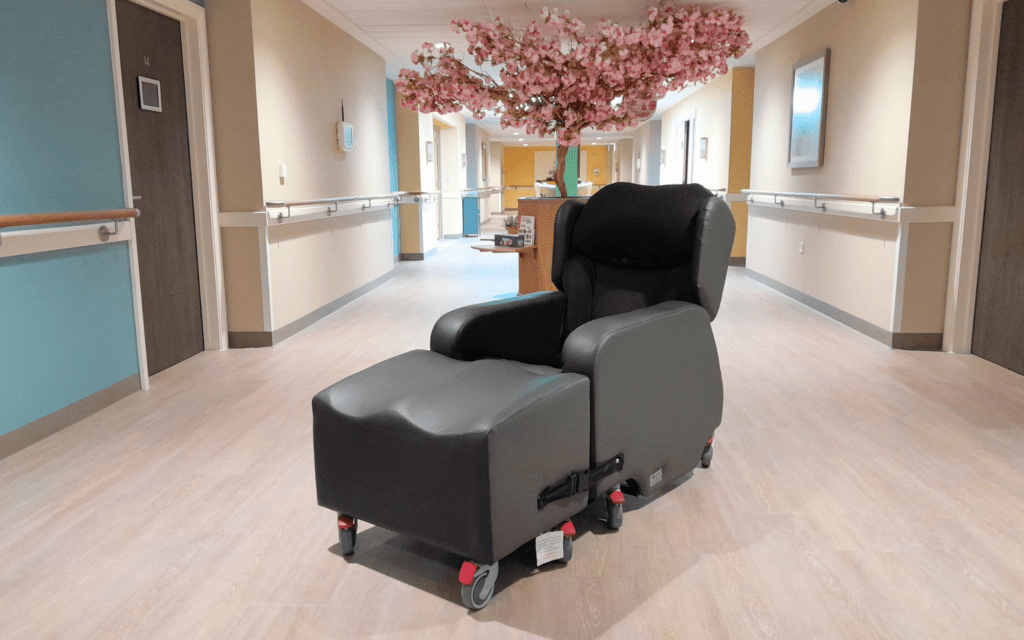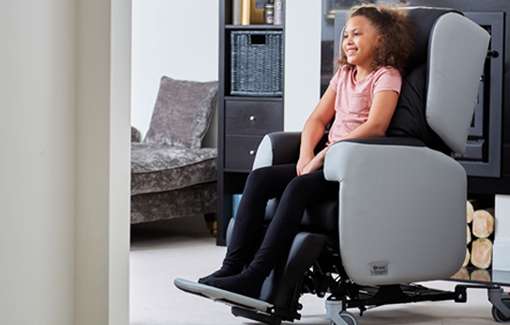Here at Vivid.Care, we’re passionate about finding people the right seating solutions to maximise their quality of life. This article is part of our series to help healthcare practitioners decide when and how is best to specify specialist seating for their clients.
We recommend reading our article ‘When is Specialist Seating Needed: The Hierarchy of Provision’ first. Once you’re confident specialist seating is necessary, answer these six questions before making your final recommendations!
Jump straight to…
Before Initial Specification
Before specifying a chair for someone, there are three questions you want to be asking yourself and your client.
1) Is the chair needed?
If you have worked through the hierarchy of provision, then the answer is likely yes!
However, it is worth taking a final step back to assess whether there are any possible alternatives.
This is especially important if you are applying for funding. You may have to justify why lower-cost alternatives, like a chair raiser or pressure-relieving cushion, are not suitable.#
TIP: Our free justification templates can help with this! Download your copies for Riser Recliner Chairs and Care Chairs.
Taking time to answer this question is also helpful if you have a client that doesn’t want a ‘special chair’. Many older people are fiercely independent. They, or their relatives, may need some convincing that your recommendation will help maintain their independence, not take it away.
At this stage, identifying and explaining the clinical implications if your recommended chair isn’t used is key.
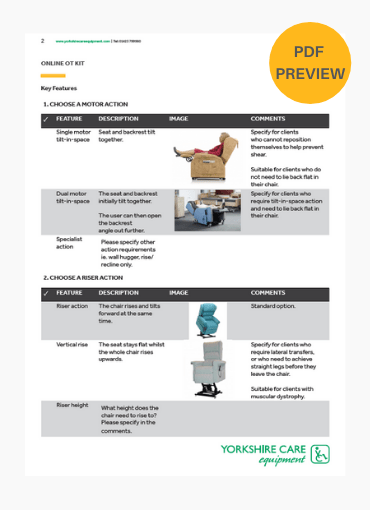
2) Is it wanted?
This is an important question that often gets overlooked. You need to make sure that the specialist seating will be used if it’s specified.
If your client or their carer(s) are reluctant, you may want to spend some time discussing and working with them before finalising your specification.
You will need to understand their concerns, can you counter them? For example, can you tell them about other clients who’ve had success with similar specialist seating before?
TIP: We have excellent case studies and feedback from some of our clients if you need any help.
Giving examples of previous successes with clinical and functional outcomes is important for boosting confidence and engagement.
Ensuring your client understands your recommendations, and how they can help them reach their goals, helps them feel involved. Clients who are involved in the decision-making process are more likely to use their equipment and engage with treatment.
Again, this is critical if you’re applying for funding. Panels don’t want to fund equipment that will sit unused.
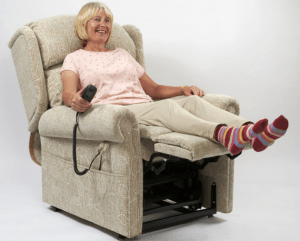
3) Are there any drawbacks?
We believe in a holistic approach to care. So, we talk a lot about how you don’t want a chair that benefits one area but harms another.
However, sometimes, there needs to be a compromise.
For example, imagine a client has weak body control and is physically unable to achieve correct pelvic positioning. A chair with a lap belt may be necessary even though it impacts their ability to move around freely. We’ve written a whole guide to proper use of chairs with restraints if you’re interested in learning more.
When offering such compromise, you’ll need to be prepared to explain why the benefits outweigh any drawbacks.
If you are making a funding application, you may also need to apply for funds for additional equipment to make sure the client is supported in all areas.
TIP: To help you answer these questions and back up your recommendations, we’ve got a whole library of free resources in our Online OT Kit.
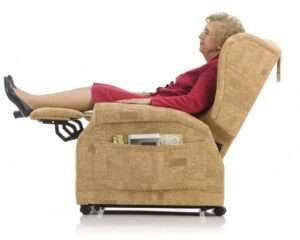
Before Clinical Review or Reassessment
When following up with your own client or taking on a new client already using specialist seating, answer these three questions. They will help you determine whether their current specification is still working for them.
4) Has the chair provided achieved the agreed objectives?
When the chair was specified, some goals should have initially been set. These may have included:
- A reduction in falls
- Treating/ preventing pressure sores
- Improving postural abnormalities
If these goals have not been achieved, you will need to decide whether more time is needed, or if a new chair and/or additional treatment/equipment is required.
TIP: Check out our prescription forms to decide what’s needed from a new chair. We have free downloads available for Care Chairs and Riser Recliner Chairs.
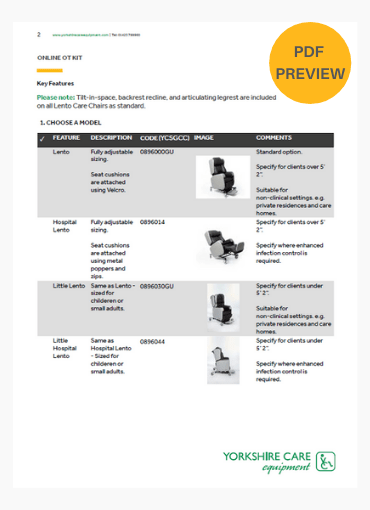
5) Is it comfortable?
When enhancing quality of life is your overall goal, comfort is key.
Asking some simple questions will quickly reveal any problems:
- Is the client comfortable?
- Are their carers worried about any discomfort?
- Are any other supports necessary to increase comfort?
If there are signs of discomfort, you may need to evaluate the seat sizing and review whether any other accessories are necessary.
If the sizing is an issue, consider choosing an adjustable chair, such as Lento, as a replacement. The seat can be resized and adjustments made easily as the client’s needs change over time.
TIP: Download our free seat sizing form. It provides tips for taking accurate measurements and gives you an easy way to record your clients’ seating dimensions.
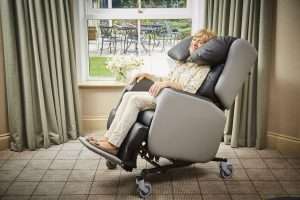
6) Do the users and/or their carers know how to use it day to day?
Finally, it is critical that the user and/or their carer(s) know how to use the chair properly.
Otherwise, they’ll be unable to make the day-to-day adjustments needed for comfort and protection of vulnerable pressure areas.
If the client or carers are unsure, additional training may be needed.
Whereas, if it’s an issue of physical ability, modifications may be needed to help the user remain independent. For example, if your client is cared for at home and their spouse is struggling to manually operate the chair, a chair with electric function may be better.
TIP: If you suspect a client needs specialist seating training, get in touch! We can offer product training via video call.
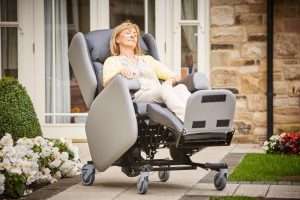
Still unsure? Book a joint assessment
There is a lot to think about when specifying specialist seating, but it doesn’t need to be a complicated process.
Here at Vivid.Care we have in-house experts and offer video, home, or showroom assessments, to help you find the right seating solution for you. Book a free appointment here.





